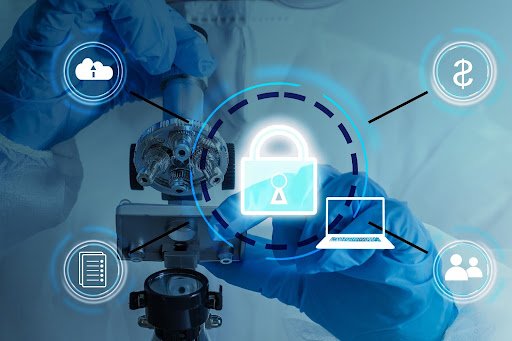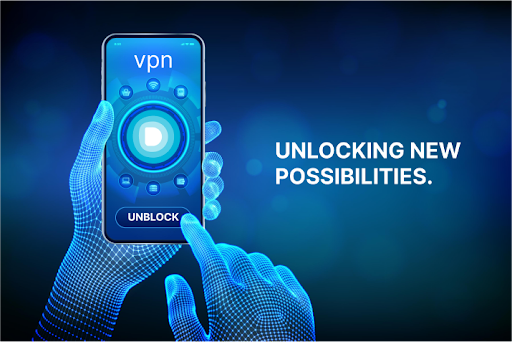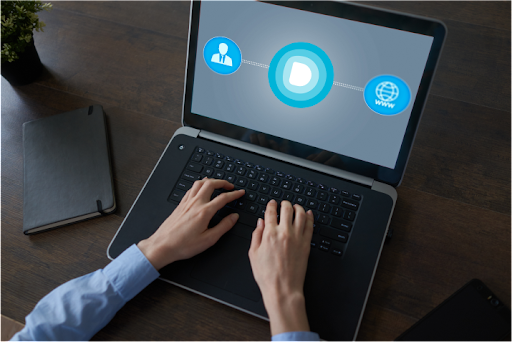Telehealth services have become indispensable for modern healthcare, offering convenience and safety in patient care. Yet, while these digital healthcare platforms provide numerous advantages, they also introduce significant security and privacy concerns.
Concerns regarding the security and privacy of telehealth systems can profoundly impact public trust in telehealth and its potential to enhance healthcare accessibility, quality, and effectiveness. It may necessitate the establishment of more comprehensive standards and regulations to ensure robust privacy and security safeguards for telehealth and all electronic consumer information.
Nevertheless, many individuals, especially those dealing with chronic illnesses, perceive telehealth’s benefits outweigh the associated risks. Physicians can contribute to the success of telehealth by crafting patient-centric care plans that leverage telehealth tools effectively and by ensuring patients are well-informed about potential privacy and security implications.
This article will delve into the security and privacy risks patients may encounter, the preventive actions telemedicine companies take, and how Virtru can play a pivotal role in ensuring your safety.
Security Threats for Telehealth
Healthcare practitioners operating from home often utilize a spectrum of devices, encompassing tablets, computers, and smartphones, heightening the susceptibility to data breaches. To mitigate these vulnerabilities, healthcare professionals must ensure that no Protected Health Information (PHI) is stored on their personal devices and ascertain that each device can be remotely wiped during loss or theft.
Limited Control Over Patient Data: As the healthcare landscape embraces IoT and connected devices for real-time patient monitoring, securing the data they transmit becomes paramount. Patients often consent to data collection without fully comprehending the scope, potentially leading to privacy infringements and HIPAA violations.
Non-HIPAA Compliant Video Conferencing: The rapid expansion of telemedicine has led to the rapid development of telehealth platforms, some of which may not adequately comply with HIPAA regulations. Relaxed regulations during the pandemic may expose sensitive patient data to third parties due to inadequate security measures. Utilization of Personal Devices (BYOD): Numerous healthcare institutions permit their personnel to employ their personal gadgets for professional tasks, a practice commonly referred to as “Bring Your Own Device” (BYOD). While these devices may connect to healthcare systems and access patient records via business VPN solutions, additional precautions are imperative to bolster endpoint security.

Security Concerns of Working from Home: Working remotely has become increasingly prevalent among healthcare professionals and contractors. With a growing number of individuals accessing healthcare networks from remote locations, the task of monitoring all users and identifying potentially fraudulent or unauthorized access poses considerable challenges.
To strengthen security and establish secure connectivity for employees, healthcare institutions should consider the following recommendations for remote work:
- Avoid Public Wi-Fi: Steer clear of connecting to public Wi-Fi networks, which may lack the necessary security measures to protect sensitive healthcare data.
- Restrict Work Activities to Designated Computers: Limit work-related tasks to designated work computers to minimize the risk of data exposure on personal devices.
- Encrypt Sensitive Data: When sharing information via email or cloud services, ensure that sensitive data is encrypted to safeguard it from unauthorized access or interception.
- Provide Ongoing Security Training: Continuously educate and train all employees on security best practices to enhance their awareness of potential threats and risks.
- Implement Remote Work Policies: Incorporate a comprehensive remote work policy into the overarching data security strategy to establish clear guidelines and procedures for secure remote operations.
Healthcare organizations can effectively mitigate the security challenges associated with remote work by adhering to these precautions.
Challenges in Telemedicine Risk Management:
As telemedicine gains prominence, it introduces unforeseen liability challenges that require attention from risk managers and policy management teams.
- Patient Data Security and Privacy: Telehealth’s reliance on IT systems necessitates robust data security measures to protect critical medical records and personal information. Compliance with healthcare privacy laws like HIPAA is paramount.
- Technical Risks in System Functionality: Introducing new technology carries inherent risks. Regular maintenance, timely updates, and adaptation to technological advancements are vital. Patients also need education to navigate technical challenges effectively.
- Geo-specific Coverage and Liability: Treating patients residing outside authorized geographical areas can lead to liability concerns. Physicians and risk management teams must address this issue diligently.
Effective risk management is essential in telehealth to address issues like misdiagnosis, insurance fraud, HIPAA violations, etc. Monitoring technology, ensuring patient access only in covered locations, and meticulous insurance policy management are crucial preventive measures.
Risks in Telehealth Services

Telehealth users are exposed to various security considerations, including:
Insecure Patient Data Transmission
In telemedicine, sensitive patient data, including PHI (Personal Health Information), may traverse devices lacking robust security protocols, elevating security vulnerabilities. Inadequate data transmission security is inconsistent with telehealth’s stringent privacy and security standards. For instance, if medication data were transmitted without adequate security, hackers could intercept it maliciously. Proactive measures are imperative to address privacy and security concerns in telehealth effectively.
Patient Data Privacy and Security
HIPAA compliance mandates that healthcare providers safeguard the confidentiality of patient’s PHI and promptly inform patients during data breaches. Alarming statistics reveal 1,461 data breaches involving the healthcare records of nearly 170 million individuals in the U.S. over the past decade. Securing communication devices and methods is paramount to thwart potential data breaches by hackers or malicious entities. Maintaining telehealth privacy and security measures is indispensable for preserving patient data privacy and security.
Challenges with Medical Devices & Applications
Medical devices like heart monitors, glucose monitors, and insulin pumps may incorporate different robust security features than the computers used in telemedicine. This disparity gives rise to telehealth cybersecurity risks, including potential patient data theft. Many of these devices are remotely monitored via the internet; however, without proper security measures, this data becomes vulnerable to capture by hackers—either during transmission or by accessing stored data on the device.
Insecure Computers and Systems
Specific systems and computers used in telehealth procedures may lack the security measures to protect sensitive health information adequately. In the current landscape, with a substantial portion of the workforce operating remotely, the software employed may be exposed to malware threats due to insecure connections between diverse communication technologies.
Telemedicine security risks emerge as a consequence of such vulnerabilities. Unprotected computers, whether at home or within medical facilities, remain susceptible to compromise by hackers. Some hospitals have fallen victim to ransomware attacks wherein cybercriminals breach their IT systems and hold critical data hostage.
In the evolving landscape of telehealth, addressing these multifaceted challenges and risks is paramount to ensuring the privacy, security, and integrity of patient data and healthcare processes.
Essential Security Measures for Telehealth Providers
To safeguard telehealth systems and prevent unauthorized access, telehealth providers should implement robust security measures. These measures include:
- Multi-Factor Authentication (MFA) & Single Sign-On (SSO): Implementing MFA and SSO for all users is crucial in preventing unauthorized access, particularly from bots and malware. MFA adds a layer of security by requiring users to provide multiple forms of identification before granting access. SSO streamlines the authentication process, ensuring secure and efficient access to multiple systems with a single set of credentials.
- Vendor Partner Security: Reviewing contracts with third-party vendors ensures all partners adhere to appropriate security measures and compliance requirements. Telehealth providers must collaborate with vendors who prioritize patient privacy and meet compliance standards. Defining security expectations and establishing protocols for responding to potential threats in these partnerships is crucial.
- Continuous Device Monitoring: Telehealth providers should maintain ongoing device monitoring to detect signs of compromise or infection. Infected devices should be promptly identified and removed from the network to prevent further spread of malware to other devices.
- Employee Training: The effectiveness of a security strategy is closely tied to employee awareness and readiness. Telehealth providers should invest in comprehensive training programs for their staff. Training should cover technology solutions, common cyber threats, and healthcare-specific risks. Ensuring employees are proficient in using programs and devices securely promotes the widespread adoption of secure practices.
While telehealth offers numerous benefits, achieving and maintaining compliance with regulations like HIPAA often requires a layered approach to security. Telehealth providers can protect patient data, collaborate with other healthcare stakeholders, and deliver safe and effective care by prioritizing encryption and other security measures. To better understand encryption’s role in security and HIPAA compliance, consider referring to our HIPAA Guide for Email and File Protection.
Addressing Telehealth Security Challenges: Solutions and Measures

Telehealth security issues, though formidable, can be effectively addressed with the right solutions and measures. Ensuring telehealth and health information security necessitates collaboration with experts who can provide tailored solutions to establish a secure operational environment.
The investment in cybersecurity programs for telehealth services is justifiable, given the potential harm caused by security breaches. Here are key security measures to tackle telemedicine privacy and security concerns:
- Secure Endpoints: Endpoints, including laptops, tablets, smartphones, and office computers, can pose security risks, particularly in telecommuting scenarios. Prioritize telehealth privacy and security by employing data encryption for all data transfers, especially those involving protected health information (PHI).
- Verify HIPAA Compliance: To maintain compliance, partner with applications and vendors that have undergone independent validation for HIPAA compliance. Use mobile app notification platforms to closely monitor any emerging issues related to HIPAA telehealth security.
- Establish Cybersecurity Guidelines for PHI Protection: To safeguard PHI as HIPAA mandates, establish policies, and provide training to counter telemedicine security threats. This is crucial, especially for devices handling PHI offsite, such as staff members telecommuting. Implement multi-factor authentication to bolster PHI security and reduce the risk of security breaches from stolen passwords.
- Utilize High-Performance Technology: Practical telehealth sessions, including video conferencing with patients, demand high-performance technology. Invest in technology that supports seamless telehealth sessions and customization options to tailor applications to your practice’s specific needs. Look for platforms that offer telehealth security mobile access to enhance accessibility.
Wrapping Up
PHI breaches often result from lost or stolen computing equipment, employee errors, or third-party oversights. The outlined initiatives offer telehealth security measures to effectively secure PHI, enabling medical practices and patients to benefit from integrating telemedicine and cybersecurity into their operations.
Telehealth presents numerous advantages to medical practices and patients. While security risks exist, partnering with experts can help minimize these risks, allowing clinics to leverage telehealth benefits without compromising patient data security.
PureDome offers a comprehensive cybersecurity solution to assist you in securing your telehealth services against cyber threats while maximizing the benefits for your practice and patients.



